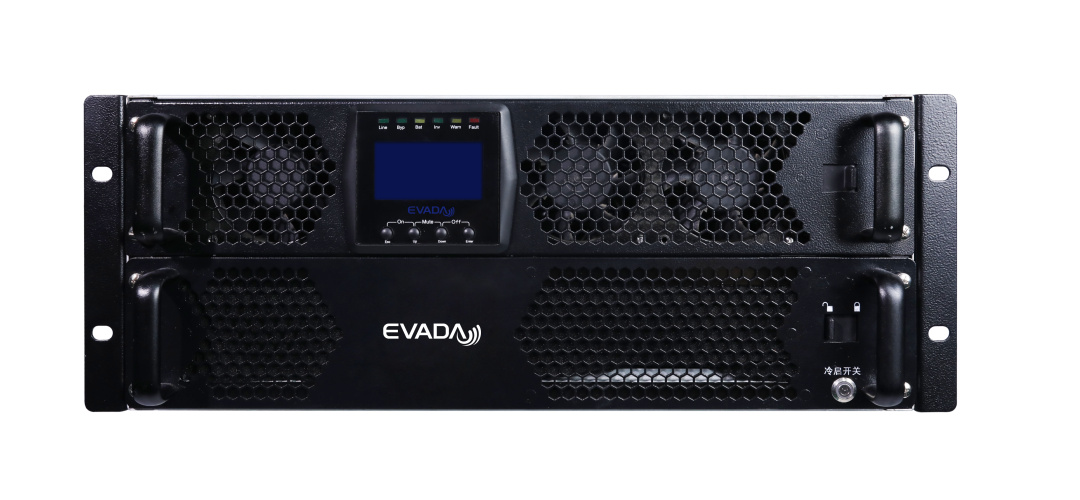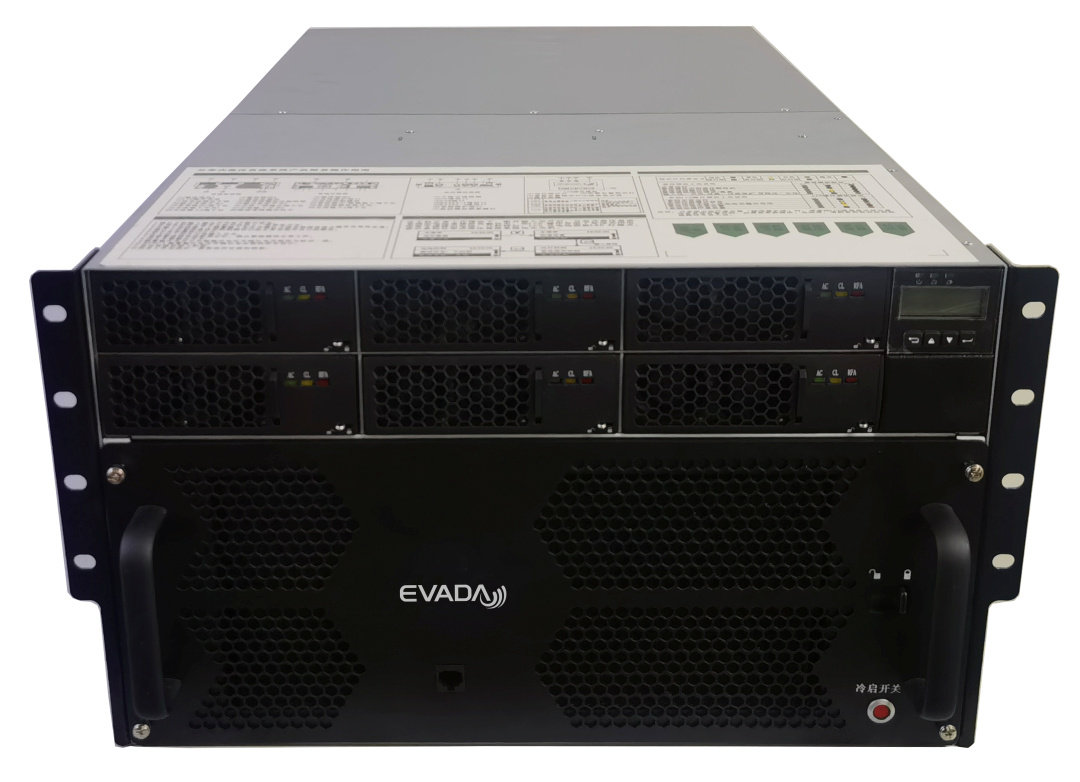When it comes to distributed power systems, it must be "familiar and unfamiliar" to some data center practitioners. This paper puts forward the following 4 points of analysis and thinking on DPS and its innovative application in data centers.
1. DPS and traditional UPS/HVDC are technically connected
First of all, it needs to be clear: According to DPS industry standards and data center design specifications, DPS is a type of uninterruptible power supply. Its particularity lies in its standard battery, and it is a UPS that provides uninterrupted power supply for standard network cabinet network equipment.
Secondly, for DPS, its essence is a lithium battery UPS system based on a fully modular design. The UPS and lithium batteries are designed in a unified manner. Both support hot swapping, and have internal real-time communication and protection linkage mechanisms, which are safe high sex.
Furthermore, echoing the traditional UPS/HVDC classification, DPS is also divided into AC online type, AC backup type, DC type (high-voltage DC type, output 240VDC or 336VDC), and AC-DC hybrid type. However, because it is defined as power supply for distributed, network cabinet network equipment, the output is generally single-phase 220Vac (AC type) or 240VDC (high voltage DC type), usually with a rated power of 3-12kVA. Generally, it supplies power to a single IT cabinet or two adjacent IT cabinets, the system power is small, and it is installed in a rack.
2. Compared with the traditional rack-mounted UPS, DPS has the advantage of latecomer
Compared with the traditional rack-mounted UPS supporting lead-acid battery solution, DPS has fully considered the difficulty of equipment replacement and maintenance, complex operation and maintenance monitoring and other shortcomings of the traditional solution at the beginning of its design and birth, and has the advantage of being a latecomer.

First of all, the DPS adopts a fully modular design. Both the lithium battery module and the power module support online hot swap, and the maintenance and replacement time of the equipment is less than 5 minutes, which is simple and easy to operate.
Secondly, the lithium battery life is as long as 10 years or more, and the weight and required installation space are reduced by more than 60% compared with the traditional lead-acid solution; there is no need to replace the battery every 3-5 years, and the installation and deployment are simple.
Finally, through the DPS centralized monitoring software, users can conduct unified centralized monitoring and management of DPS devices (including UPS and lithium batteries) deployed in large quantities at the same time.
3. DPS brings highly flexible architecture and application innovation
Centralized and decentralized power supply is a relative concept, which is essentially a problem of power supply scale and granularity. At the application level, centralized and distributed power supply solutions have their own advantages and disadvantages.
Some new/renovated data centers face the following problems and challenges during design and planning:
1) The overall deployment of the power supply and distribution system requires a large initial investment;
2) IT cabinet load rate is low, the shelf cycle is long, the U space is wasted, and the operation efficiency is low;
3) There are many types of customers/businesses served, the load fluctuates greatly, and the future demand is uncertain;
4) The energy-saving transformation of old data centers faces problems such as load-bearing, insufficient space, and high energy consumption;
In the distributed power supply and distribution architecture, DPS can closely follow the development and changes of IT services because its granularity is small enough, and it can truly build according to the granularity of IT cabinets, linear investment, and reduce Capex. At the same time, because it is close to the IT load, it has little impact on the upstream power distribution system and has strong adaptability.

3.1 Power supply and distribution architecture needs to adapt to flexible hybrid IT architecture
Cloud computing brings sufficient flexibility to IT business processing, can effectively cope with IT business fluctuations, and improve IT resource utilization and system availability. From the perspective of the entire business value chain of the data center, data is the core production factor, IT infrastructure is the production equipment, and the power supply and distribution system of the data center plays an auxiliary support role. With the continuous development of IT technology, data availability can also be guaranteed and improved through virtualization technology, distributed redundancy technology, and remote multi-active technology. Therefore, the effective combination of IT infrastructure and data center key infrastructure can meet the high availability requirements for data in A-level data centers even if low-level data center key infrastructure is used, and at the same time reduce the key infrastructure of the entire data center. investment, lower TCO.
At present, many cloud service providers, Internet companies, and telecom operators have explored and practiced relevant architectures. "GB50174-2017 Data Center Design Specification" also synchronized and explained the division of A-level data centers:
1) For the "1 mains + 1 UPS/HVDC" architecture that has been widely used in the Internet and carrier business, it can be classified as A-level data if it meets the quality requirements for the upstream power grid and downstream load power supply center.
2) When two or more data centers located in different regions are built at the same time, as backups for each other, and the data is transmitted in real time, and the business meets the continuity requirements, the infrastructure of the data center can be configured according to the fault-tolerant system, or it can be configured according to the redundant system. Other system configuration.
3) When establishing a disaster recovery data center in the same city or in a different place, the disaster recovery data center should be at the same level as the primary data center. When the data in the disaster recovery data center and the primary data center are backed up in real time and the business meets the continuity requirements, the level of the disaster recovery data center can be the same as that of the primary data center, or it can be lower than that of the primary data center.
In the financial industry that requires extremely high usability, the People's Bank of China issued the "Fintech Development Plan (2022-2025)" on December 31, 2021, and clearly proposed the efficient collaboration of "cloud, management, edge and terminal" to release Cloud pressure, quickly respond to user needs; actively adopt multi-active redundancy technology to build a highly reliable, multi-level disaster recovery system; establish a green high-availability data center.
3.2 DPS has 2N, asymmetric dual bus, DR, RR architecture genes
The 2N architecture has the characteristics of high reliability and availability, but because of its fault-tolerant configuration, there are also problems in the application, such as low system load rate, low operating efficiency, and high investment and operating costs. In order to better balance system availability and TCO, at the power supply and distribution level, an asymmetric dual bus composed of "1 mains + 1 UPS/HVDC", distributed redundancy (DR), and backup redundancy (RR) The architecture gradually returns to the public view and is put into practice. From the perspective of the overall system of the data center, different power supply and distribution levels are used to form an architecture combination for each power supply and distribution stage from the medium voltage to the front end of the IT load, so as to realize the comprehensive optimization of system availability and cost.
3.3 "Class A" single-cabinet modular data center cluster
IT cloudification has also aroused the industry's thinking about power supply and distribution cloudification. Compared with traditional centralized power supply, DPS distributed power supply has the advantage of small granularity, close to IT load, and power supply for a single or two adjacent IT cabinets. Management and adjustment can more refined. By connecting the high-voltage DC DPS DC outputs scattered in each IT cabinet in parallel, a DC energy pool or DC microgrid is formed. Relying on the energy virtualization strategy, it can flexibly respond to the workload requirements and fluctuations of different IT cabinets, and improve energy utilization while ensuring availability.
For IT cabinets that integrate distributed product technologies such as small busbars, DPS, and backplane air conditioners, it can be understood as an independent "single-cabinet modular data center" to some extent, or can form a "single-cabinet modular data center" Cluster". Relying on IT technology, real-time transmission of business data between different IT cabinets, micro-modules, and computer rooms, while ensuring business continuity and data integrity, realize mutual backup at the data center level and improve system availability. Combined with the definition of the national standard GB50174-2017 on the A-level data center architecture, and the exploration and practice of cloud service providers and the central bank on multi-active redundant architectures, multi-active data centers using low-level power supply architectures can also have A-level data centers Data availability, while meeting the green and low-carbon development goals of the data center.
To sum up, the distributed power system (DPS) has the advantage of being a latecomer to the traditional UPS solution; its own technology is advanced, and it is a master of efficient power supply and distribution system technology and efficient auxiliary system technology; at the same time, the structure is extremely flexible. The wiring method can flexibly build 2N, T3, DR, and RR architectures, with a small body and large energy, meeting the needs of various high-availability scenarios.
In addition, as a core component of the key infrastructure of the data center, DPS is in line with the current development trend of Internet cloud computing technology and modular data center construction. It is more flexible and IT-genetic, and is especially suitable for edge computing nodes and single-cabinet modular data centers. Clusters (such as retail colo), small granularity, staged construction scenarios such as energy-saving renovation of old computer rooms